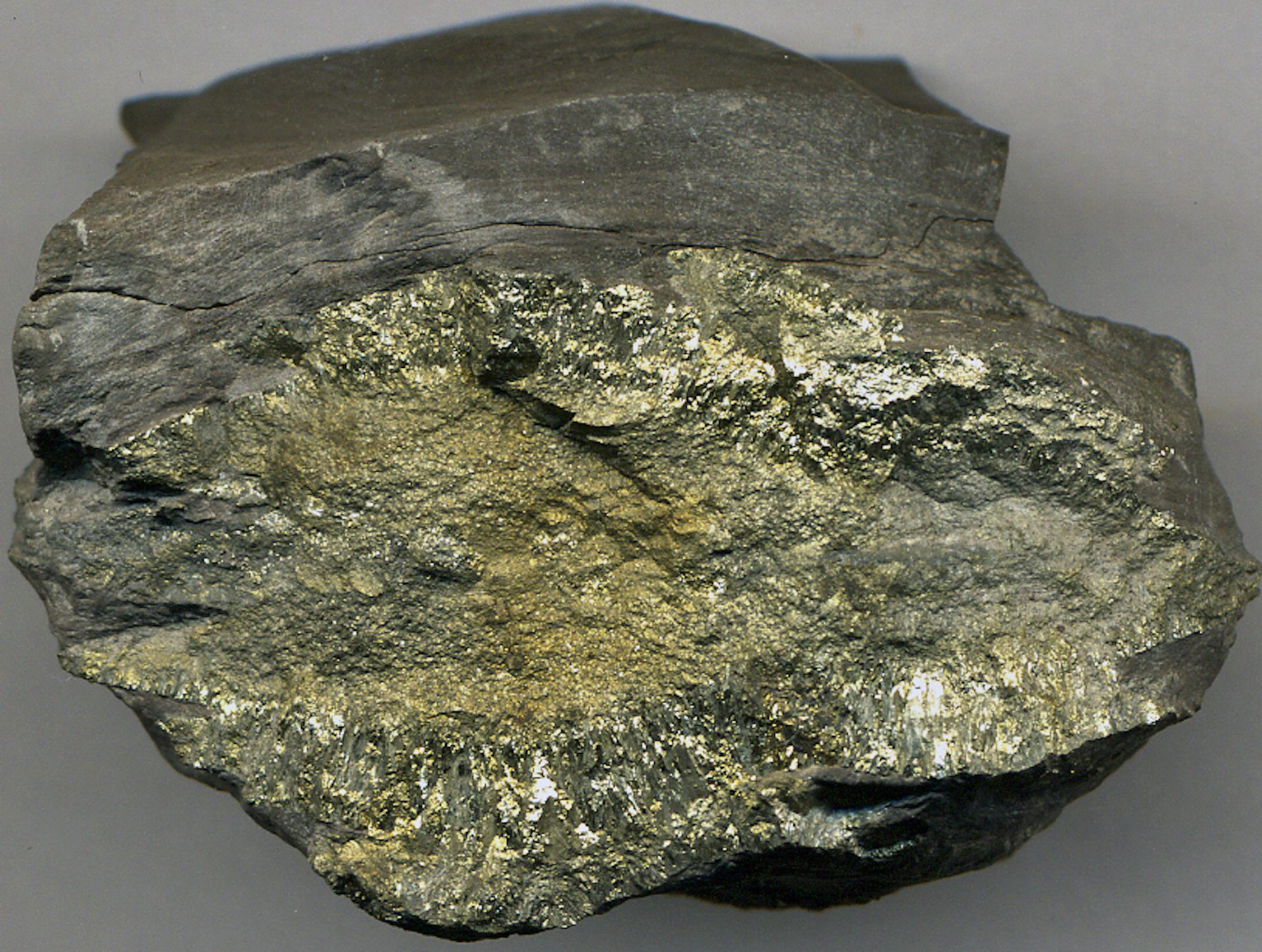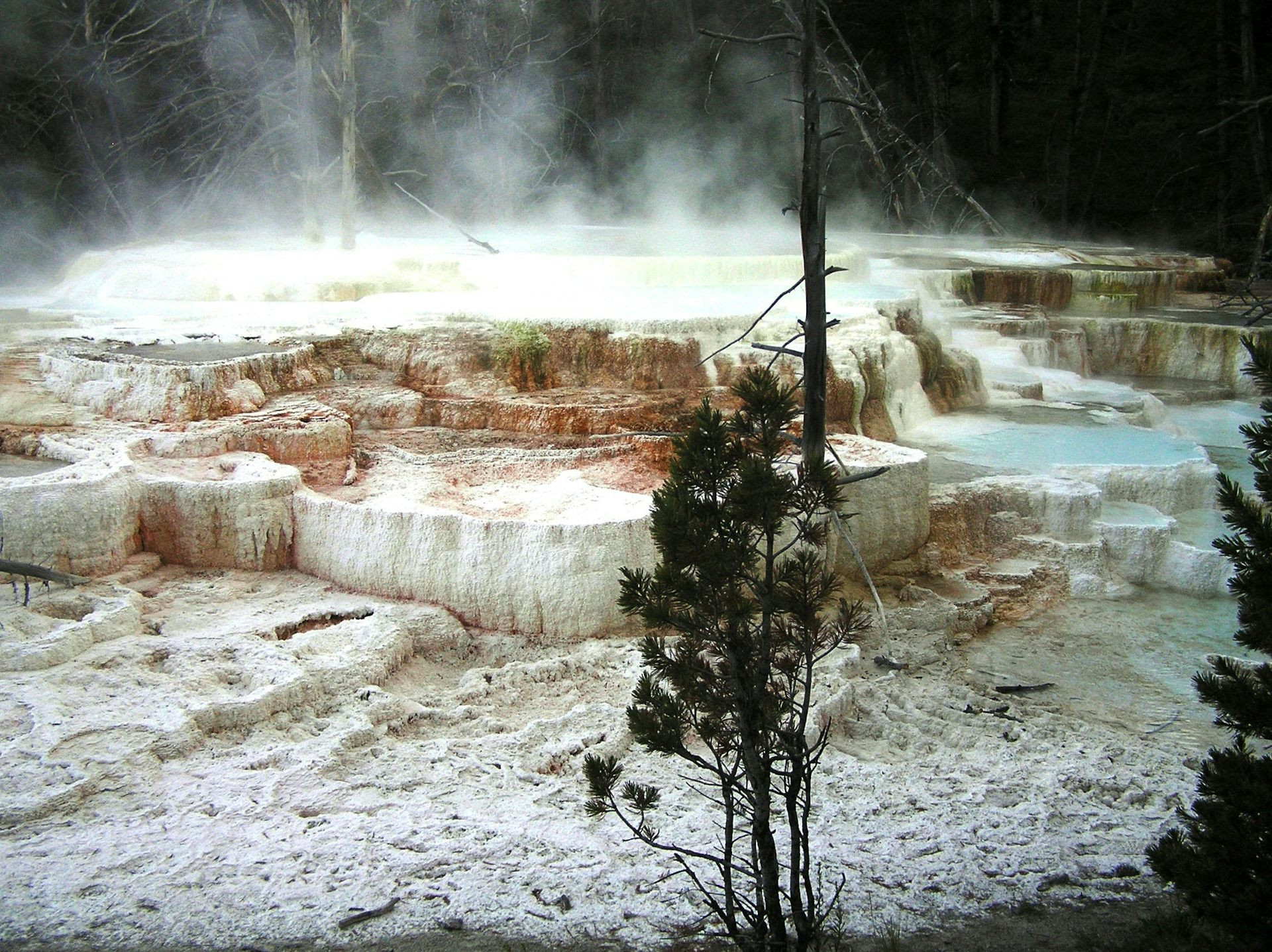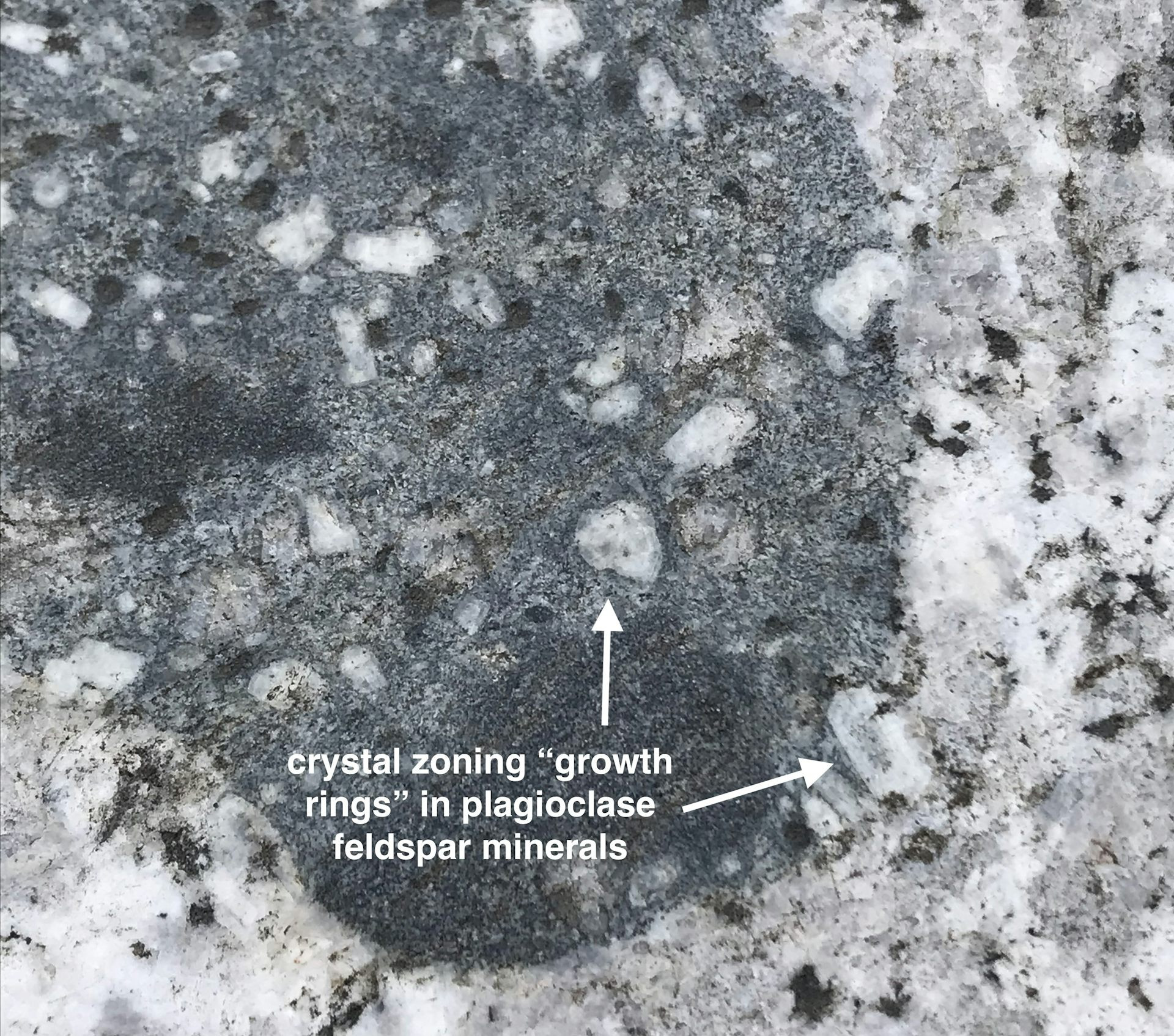Rock crystals, those captivating formations found in nature, hold a special allure. How Are Rock Crystals Formed? This detailed guide, brought to you by rockscapes.net, explores the fascinating processes behind crystal creation, their applications in landscape design, and how to integrate these geological marvels into your outdoor spaces for breathtaking rockscapes. Learn about their transformation from minerals to stunning landscape elements.
1. What Are Rock Crystals and How Are They Formed?
Rock crystals are naturally occurring, solid materials with a highly ordered atomic structure, resulting in distinct geometric shapes. They are formed through various geological processes involving changes in temperature, pressure, and chemical conditions, often over extended periods.
1.1. Formation Processes
Rock crystals form through several primary processes:
-
Crystallization from Magma: Deep within the Earth, molten rock, or magma, contains various elements. As magma cools, these elements combine to form minerals. If cooling occurs slowly, atoms have time to arrange themselves into orderly patterns, resulting in the formation of large, well-defined crystals. Granite, a common igneous rock used in landscaping, often exhibits large crystals of quartz, feldspar, and mica due to this slow cooling process.
-
Precipitation from Solution: When water saturated with dissolved minerals evaporates, the minerals can precipitate out of the solution as crystals. This process often occurs in caves, hot springs, and arid environments. For example, the mineral halite (rock salt) forms when saltwater evaporates. Similarly, travertine, a type of limestone often used in decorative rockscapes, precipitates from hot springs as carbon dioxide is released.
-
Metamorphism: Metamorphism occurs when existing rocks are subjected to high pressure and temperature, causing their mineral composition to change. During this process, atoms rearrange themselves into new crystal structures. Minerals like garnet, kyanite, and staurolite often form through metamorphism. These minerals can add unique colors and textures to landscape designs.
1.2. Nucleation Sites
Crystals need a nucleation site to initiate growth. A nucleation site is a location where the first few atoms or molecules can come together in the correct arrangement to form a stable cluster. This site can be a microscopic speck of dust, a rough edge on a rock surface, or even another crystal.
1.3. The Role of Time and Space
The size and clarity of rock crystals depend significantly on the time and space available for their formation. Slow cooling or evaporation allows more time for atoms to arrange themselves into perfect lattices, resulting in larger, clearer crystals. When crystals form in environments with limited space, they tend to be smaller and may have imperfections.
2. Key Factors Influencing Rock Crystal Formation
Several factors influence how rock crystals are formed, including chemical composition, temperature, pressure, and the presence of impurities.
2.1. Chemical Composition
The chemical composition of the environment in which crystals form plays a crucial role in determining the type of crystal that will grow. Different minerals require different combinations of elements. For example, quartz crystals require silica (silicon dioxide), while calcite crystals require calcium carbonate.
2.2. Temperature
Temperature is a critical factor in crystal formation. Different minerals crystallize at different temperatures. For example, minerals like olivine and pyroxene crystallize at high temperatures from magma, while minerals like quartz and feldspar crystallize at lower temperatures.
2.3. Pressure
Pressure also affects crystal formation. High pressure can stabilize certain crystal structures and influence the size and shape of crystals. Metamorphic rocks, which form under high pressure, often contain unique crystal structures that are not found in other types of rocks.
2.4. Impurities
The presence of impurities can affect the color, shape, and size of rock crystals. For example, small amounts of iron can give quartz crystals a purple color, resulting in amethyst. Impurities can also disrupt the crystal lattice, leading to imperfections.
3. Types of Rock Crystals and Their Geological Origins
Rock crystals are classified based on their chemical composition, crystal structure, and geological origin. Some common types include quartz, calcite, feldspar, and mica.
3.1. Quartz Crystals
Quartz is one of the most abundant minerals in the Earth’s crust and comes in various forms, including clear quartz, amethyst, citrine, and smoky quartz.
-
Geological Origin: Quartz crystals form in various geological environments, including igneous, metamorphic, and sedimentary rocks. They crystallize from magma, precipitate from hydrothermal solutions, and form during metamorphism.
-
Landscape Applications: Clear quartz crystals are used in decorative rock gardens, water features, and as focal points in landscape designs. Amethyst and citrine can add color and visual interest to rockscapes.
3.2. Calcite Crystals
Calcite is a common mineral found in sedimentary rocks like limestone and marble. It is known for its ability to dissolve in acidic water, leading to the formation of caves and karst landscapes.
-
Geological Origin: Calcite crystals form primarily through precipitation from calcium-rich water. They are commonly found in limestone caves, hot springs, and marine environments.
-
Landscape Applications: Calcite crystals and limestone rocks are used in garden pathways, retaining walls, and decorative stone arrangements. Travertine, a form of calcite, is popular for creating patios and water features.
3.3. Feldspar Crystals
Feldspar is a group of minerals that make up a significant portion of the Earth’s crust. Common types of feldspar include orthoclase, plagioclase, and microcline.
-
Geological Origin: Feldspar crystals form primarily in igneous and metamorphic rocks. They crystallize from magma and form during metamorphism under high temperature and pressure.
-
Landscape Applications: Feldspar-rich rocks like granite are used in various landscape applications, including paving stones, retaining walls, and decorative boulders. The varied colors and textures of feldspar add visual appeal to rockscapes.
3.4. Mica Crystals
Mica is a group of sheet silicate minerals known for their perfect basal cleavage, which allows them to be easily split into thin, flexible sheets. Common types of mica include muscovite and biotite.
-
Geological Origin: Mica crystals form in metamorphic rocks and some igneous rocks. They form during metamorphism when clay minerals are subjected to high temperature and pressure.
-
Landscape Applications: Mica is used in decorative stone mulches, pathway materials, and as a sparkly addition to water features. The reflective properties of mica add a touch of elegance to landscape designs.
4. The Science Behind Crystal Formation: A Detailed Look
The formation of rock crystals is governed by fundamental principles of chemistry and physics. Understanding these principles helps appreciate the intricate processes that create these geological wonders.
4.1. Atomic Structure and Crystal Lattice
At the atomic level, crystals are composed of atoms, ions, or molecules arranged in a highly ordered, repeating pattern called a crystal lattice. This lattice structure is responsible for the characteristic shapes and properties of crystals.
4.2. Chemical Bonds
Chemical bonds hold the atoms, ions, or molecules together in the crystal lattice. The type of chemical bond (ionic, covalent, or metallic) affects the hardness, solubility, and other properties of the crystal.
4.3. Thermodynamics of Crystallization
Crystallization is a thermodynamic process driven by the tendency of systems to minimize their energy. When conditions are right, the formation of a crystal lattice lowers the overall energy of the system, making crystallization favorable.
4.4. Kinetics of Crystallization
The kinetics of crystallization refers to the rate at which crystals form and grow. Factors such as temperature, supersaturation, and the presence of impurities can affect the rate of crystallization.
5. Famous Locations for Finding Rock Crystals
Several locations worldwide are renowned for their abundance and variety of rock crystals. These sites offer valuable insights into the geological processes that create crystals.
5.1. Crystal Cave, Naica, Mexico
The Crystal Cave in Naica, Mexico, is famous for its giant gypsum crystals, some of which are up to 40 feet long. These crystals formed in a cave filled with hot, mineral-rich water.
5.2. Herkimer, New York, USA
Herkimer, New York, is known for its “Herkimer diamonds,” which are double-terminated quartz crystals found in dolostone formations. These crystals are prized for their clarity and unique shape.
5.3. Brazil
Brazil is one of the world’s leading producers of quartz crystals, including amethyst, citrine, and clear quartz. The state of Minas Gerais is particularly rich in crystal deposits.
5.4. Madagascar
Madagascar is known for its diverse range of minerals, including various types of quartz, tourmaline, and beryl. The island’s unique geological history has resulted in the formation of rare and beautiful crystals.
6. How Rock Crystals Enhance Landscape Design
Rock crystals can significantly enhance landscape design by adding natural beauty, texture, and visual interest. They can be used in various applications, from decorative accents to structural elements.
6.1. Decorative Rock Gardens
Rock crystals can be incorporated into rock gardens to create stunning visual displays. Quartz crystals, amethyst, and citrine can be arranged among plants and other rocks to add color and sparkle.
6.2. Water Features
Rock crystals can be used to enhance water features such as fountains, ponds, and waterfalls. Clear quartz crystals can be placed underwater to create a shimmering effect, while larger crystals can serve as focal points.
6.3. Pathways and Walkways
Crushed rock crystals can be used as pathway materials, adding a touch of elegance to garden walkways. Mica-rich stone mulches can create a sparkly surface that reflects light.
6.4. Retaining Walls and Borders
Large rocks and boulders containing crystals can be used to build retaining walls and garden borders. Granite and limestone rocks with visible crystals can add structural integrity and visual interest to these features.
7. Incorporating Rock Crystals into Your Landscape: Practical Tips
To effectively incorporate rock crystals into your landscape design, consider the following practical tips.
7.1. Choosing the Right Crystals
Select rock crystals that complement the overall style and color palette of your landscape. Consider the size, shape, and texture of the crystals, and choose those that best suit your design goals.
7.2. Arranging Crystals for Visual Impact
Arrange rock crystals in a way that maximizes their visual impact. Group crystals of similar types together to create a cohesive look, or mix different types of crystals to add variety. Consider the lighting conditions and position crystals to catch the sunlight and create sparkle.
7.3. Combining Crystals with Plants
Combine rock crystals with plants to create visually appealing and harmonious landscapes. Choose plants that complement the colors and textures of the crystals, and consider the growing conditions required by both the crystals and the plants.
7.4. Maintaining Rock Crystal Landscapes
Regularly clean rock crystals to maintain their beauty. Use a soft brush and water to remove dirt and debris. Avoid using harsh chemicals, which can damage the crystals. Inspect rock crystal structures periodically to ensure they are stable and secure.
8. Rockscapes.net: Your Partner in Creating Stunning Rock Crystal Landscapes
At rockscapes.net, we provide a comprehensive range of resources and services to help you create stunning rock crystal landscapes. From design ideas and product information to expert advice and installation services, we are your partner in transforming your outdoor spaces into beautiful and functional environments.
8.1. Inspiration and Design Ideas
Explore our extensive collection of landscape design ideas featuring rock crystals. Browse through photos and descriptions of various projects, and get inspired to create your own unique rock crystal landscape.
8.2. Product Information
Learn about the different types of rock crystals available and their applications in landscape design. Find detailed information on the properties, colors, and textures of various crystals, and choose the best materials for your project.
8.3. Expert Advice
Consult with our team of landscape design experts to get personalized advice and guidance. We can help you choose the right crystals, create a design that meets your needs and budget, and provide tips on installation and maintenance.
8.4. Installation Services
Our experienced installation team can handle all aspects of your rock crystal landscape project, from site preparation to crystal placement. We ensure that your project is completed to the highest standards of quality and craftsmanship.
9. The Evolving Trends in Rock Crystal Landscaping
The world of landscaping is ever-evolving, with new trends emerging regularly. Rock crystal landscaping is no exception. Staying informed about the latest trends can help you create a modern and appealing outdoor space.
9.1. Sustainable Landscaping with Native Crystals
There’s a growing emphasis on sustainable landscaping practices, including using native rock crystals. Sourcing crystals locally reduces transportation costs and supports regional economies. Native crystals also tend to blend more seamlessly with the natural environment, creating a harmonious landscape.
9.2. Minimalism and Zen Gardens
Minimalist and Zen gardens are gaining popularity, emphasizing simplicity, tranquility, and harmony. Rock crystals play a crucial role in these designs, often used as focal points or to create a sense of balance. A few carefully placed quartz crystals can add a touch of elegance and serenity to a Zen garden.
9.3. Combining Crystals with Smart Technology
Smart technology is finding its way into landscaping, and rock crystals can be integrated into these systems. For example, crystals can be used in lighting features that change color based on the time of day or to enhance the ambiance of outdoor spaces. Integrating crystals with smart irrigation systems can also create visually stunning and water-efficient landscapes.
9.4. Vertical Gardens and Crystal Walls
Vertical gardens are becoming increasingly popular, especially in urban areas where space is limited. Rock crystals can be incorporated into vertical gardens to add texture and visual interest. Crystal walls, where crystals are mounted on a vertical surface, are also gaining traction as unique and eye-catching features.
10. FAQ: Addressing Common Questions About Rock Crystal Formation
Here are some frequently asked questions about how rock crystals are formed and their applications in landscaping:
10.1. What exactly are rock crystals?
Rock crystals are solid materials with a highly ordered atomic structure, resulting in distinct geometric shapes. They form through various geological processes involving changes in temperature, pressure, and chemical conditions.
10.2. How long does it take for rock crystals to form?
The time it takes for rock crystals to form can vary from days to millions of years, depending on the specific conditions and minerals involved. Slow cooling or evaporation allows more time for atoms to arrange themselves into perfect lattices.
10.3. What is the role of water in crystal formation?
Water plays a crucial role in dissolving and transporting minerals, allowing them to precipitate out of solution as crystals. Hydrothermal solutions and evaporation processes are essential for the formation of many types of crystals.
10.4. Can I grow my own rock crystals at home?
Yes, you can grow certain types of crystals at home using simple materials like salt, sugar, or borax. These experiments demonstrate the basic principles of crystal formation.
10.5. Are all rock crystals the same?
No, rock crystals vary in chemical composition, crystal structure, color, and size. Different minerals form under different conditions, resulting in a wide range of crystal types.
10.6. How do geologists determine the age of crystals?
Geologists use various dating methods, such as radiometric dating, to determine the age of crystals. These methods rely on the decay of radioactive isotopes within the crystal structure.
10.7. What are the environmental impacts of mining rock crystals?
Mining rock crystals can have environmental impacts, including habitat destruction, soil erosion, and water pollution. Sustainable mining practices and responsible sourcing are essential to minimize these impacts.
10.8. How can I identify different types of rock crystals?
You can identify different types of rock crystals based on their color, shape, hardness, and other physical properties. Mineral identification guides and online resources can help you identify unknown crystals.
10.9. What are some of the most valuable rock crystals?
Some of the most valuable rock crystals include diamonds, emeralds, rubies, and sapphires. These gemstones are prized for their beauty, rarity, and durability.
10.10. How can I maintain the beauty of rock crystals in my landscape?
Regularly clean rock crystals with a soft brush and water to remove dirt and debris. Avoid using harsh chemicals, and protect crystals from physical damage.
Rock crystals are more than just pretty stones; they are geological treasures that can transform any landscape. Understanding how these crystals form allows you to appreciate their natural beauty and incorporate them effectively into your outdoor designs.
Ready to elevate your landscape with the timeless beauty of rock crystals? Visit rockscapes.net today for inspiration, expert advice, and high-quality materials that will bring your vision to life. Let us help you create a stunning rock crystal landscape that you’ll enjoy for years to come.
 Pyrite in black shale rock from a quarry in Indianapolis, Ind.
Pyrite in black shale rock from a quarry in Indianapolis, Ind.
 White rock terraces around a vent in the earth
White rock terraces around a vent in the earth
 White rectangular feldspar crystals with faintly visible growth rings are prominent against grey granodiorite rock.
White rectangular feldspar crystals with faintly visible growth rings are prominent against grey granodiorite rock.

